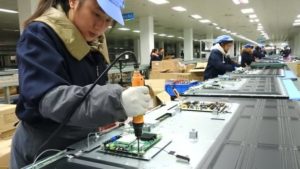This 2019 Both Latin America and the rest of the world were avid viewers of the commercial war that broke out between United States y China, which impacts both the region and the rest of the countries in different ways, however some take advantage of this fact.
MiamiDiario Newsroom
This epic trade war between China and the United States began in March 2018, after the first president of the United States, Donald Trump, announced that it would apply tariffs of 50.000 million dollars chinese products based on the section 301 of the Trade Act of 1974.
Trump relied on section 301 to start this trade conflict ensuring that there was a history of «unfair trade practices» and intellectual property theft.
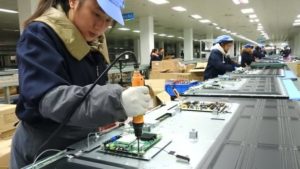
On April 2, 2018, China responded that it would collect trade tariffs on more than 128 US products, including the soy, one of the main exports from the United States to the Asian giant. This measure would affect some US$3.000 million in imports, this was a new escalation in the trade war between the two largest economies on the planet.
The Chinese Ministry of Commerce detailed that fruits and other related goods will have a tariff of 15%, while for products derived from pork the tariff would be 25%.

American soybeans
In another statement, the Chinese Ministry of Commerce also urged the United States to back down to place tariffs against steel and aluminum from their country. Beijing assured that those sanctions violated the rules of the World Trade Organization (WTO), also requested that bilateral exchanges return to normal.
Two months later, on June 15, 2018, Donald Trump announced the imposition of ar25% advance to a list of chinese products for 50.000 million dollars, also accused Beijing of intellectual Property Theft, recounted at the time bbc.com.
The tariffs imposed by Trump began to be applied from July 6, 2018, and affected 1.102 categories of products, which were as varied as airplane tires, even washing machines.
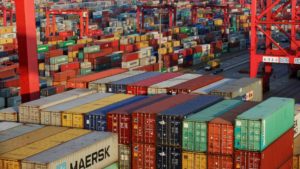
Containers in a Chinese port
The experts indicated that these tariffs were directed -mainly- towards merchandise from the industrial sectors included in the "Made in China 2025" plan, with which Beijing wants to develop high-tech production in the aerospace, automotive, and information technology areas. and robotics.
Trump assured in 2018, "America cannot tolerate the loss of our technology and intellectual property through unfair economic practices.
Response of China
Response China It was not long in coming, the next day, on June 16, 2018 - through a statement from the Ministry of Commerce - it assured that it would also impose its own tariffs. It read, "We are going to introduce tariff measures of the same scale and with the same intensity.
For his part, Chinese Foreign Ministry accused Washington of destroy bilateral interests and weaken the international trading system.

Chinese Foreign Minister Wang Yi
In a statement, the Chinese Foreign Ministry said, "The United States has shown sudden changes and ha untied a trade war" Indian bbc.com.
Another paragraph reads, “China does not want a trade war. However, confronted with this short-sighted act that harms the United States and others, China has been left with no choice but to fight vigorously, to defend the interests of the nation and its people.
In that way, the China Customs Commission reported on the imposition of additional tariffs of 25%, worth 50.000 million dollars on 659 US products, that is, the same value imposed by Donald Trump, he highlighted lavanguardia.com.
The most affected goods would be vehicles and agricultural products, two of the most sensitive sectors for the North American country.
The war begins
The 6 of July of 2018, China accused the United States of starting "the trade war" largest in the history of the economy.
The 25% tariffs imposed by Trump on more than 800 chinese products -such as industrial machinery, medical devices and auto parts- equivalent to 34.000 million came into force on July 6, he highlighted. cnn.com.

On the same day, the Chinese Ministry of Foreign Affairs announced that the tariffs from your country to US merchandise they came into effect immediately once Washington made good on its threat.
In this way, both nations imposed new and high tariffs on tens of billions in exports from the other.
And the war continued, three days later, Washington declared that the United States would establish additional 10% duty to another 200 billion Chinese imports, if China responded to US measures, reported bbc.com.

Chinese imports
For its part, the Asian giant replied by threatening tariffs on 50.000 billion in US products, and reaffirming the "start of a trade war" by the United States.
Then, on August 8, the USTR published the list of 279 chinese products, for a value of 16 million, which would be subject to 25% tariffs.
China and the WTO
Due to the ongoing conflict, China went in May 2018 to the World Trade Organization (WTO) seeking to resolve the existing dispute with the United States within the framework of the dispute settlement system of the international organization, explained wto.org.
One of the tariffs imposed by the United States that was affecting the Asian giant the most was the one related to imports of crystalline silicon photovoltaic products and measures related to renewable energy.
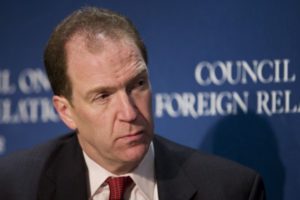
Under Secretary for International Affairs of the United States Department of the Treasury, David Malpass
After this request, the Undersecretary for International Affairs of the United States Department of the Treasury, David Malpass, and Chinese Vice Minister of Commerce Wang Shouwen met on August 22 in Washington DC, the objective of this meeting was to restart the negotiations.

Chinese Vice Minister of Commerce Wang Shouwen
The next day, United States put into effect the duty taxes on Chinese products worth 16.000 million dollars. Therefore, on August 27 China returns to the WTO to make a new request in the dispute settlement system.
Then on December 1, 2018, during the G-20 meeting held in Argentina, the Presidents of the United States, Donald Trump and of China, Xi Jinping they met for more than two hours, and agreed postpone the imposition of new tariffs business for a period of 90 days, reported elpais.com.

Donald Trump and Xi Jinping at the G-20 meeting in Argentina
The objective of this meeting between leaders was to seek a solution to the trade war between the two largest economic blocs in the world
Before the meeting with Xi Jinping in Buenos Aires, Trump threatened to raise the 1% tariffs imposed by the United States on 25 million dollars of Chinese merchandise to 10% on January 200.000. This aspect worried both China and the whole world, since the consequences on the economic system would have been incalculable in a war between the two greatest powers on the planet.
After the truce agreed in the trade war, in January 2019, Chinese importers bought soybeans from the United States three times in one month, he said. reuters.com.
This was an important step because U.S. soybean exports to China, the world's leading buyer of the oilseed, had plummeted due to the trade dispute between the two countries. This caused the higher supply to push prices for U.S. farmers. to lows in nearly a decade.
Onslaught against Huawei
In a new escalation in the US-China trade war, US prosecutors charged Huawei with bank fraud, defrauding the US and money laundering. To which the Chinese technology company immediately replied with a statement denying these accusations and revealing that they trusted that the American justice would reach the same conclusion.
On May 19, 2019, Google Following orders from the Trump administration, it announced that it would no longer provide updates to its mobile operating system, Android, to owners of the brand's phones. Huawei.
that way Google suspended with Huawei those businesses that required transfer of hardware and software, except those covered by open source licenses, highlighted xataka.com.

The new sanction included that the new units of Huawei they could not use basic applications to work (such as Gmail, Play Store, Google maps, among others).
The Chinese technology company, upon learning of this decision by Washington, reported that it would create its own updates, but the complexity of designing and distributing a new operating system, the difficulty for application developers to release a third version of the applications, created doubts about the effectiveness of Huawei's proposals.
For some experts in the technological area, the United States made that decision because does not want Chinese competition in high-tech manufacturing.

One of the first companies to criticize this decision of the Trump administration was Google -despite obeying the mandate- claimed that it was much safer for Huawei mobiles to work with its own operating system than with software developed in China.
Motivated by this statement or not, the reality is that Trump attended the G20 meeting in Osaka a month later to lower the tension and extend the veto of Huawei by American companies.
In fact, showing goodwill, the latest extension of the Temporary General License for China Huawei company it was scheduled to expire in November 2019, however the US Department of Commerce announced a 90-day extension.
G20 Osaka 2019
On June 29, in the Japanese city of Osaka, where the G20 summit, the meeting concluded with an expected announcement, the president of the United States, Donald Trump, and the Chinese president, Xi Jinping, agreed on a trade war truce had both nations for more than a year, reported france24.com.
On that occasion, Trump assured that his government will not impose new tariffs on Chinese imports and that will allow American companies to sell products to the Huawei company, thus showing an improvement in relations between these countries, after a year of growing tension.
Another agreement between the two leaders was resume trade negotiations which were interrupted in the month of May.
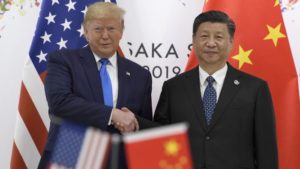
Donald Trump and Xi Jinping in Osaka
At the time, Trump said, "We're going to work with China from where we left off, to see if we can come to an agreement."
The US president commented that China promised to buy "large quantities" of agricultural products from the United States, a fact that the Beijing government had already accessed in december 2018.
Ending the conflict?
It should be noted that on October 12 the United States and China committed to sign a partial agreement so as not to raise the new tariffs that existed at that time. Donald Trump assured that the Asian government admitted make changes in the way it manages its economy, including some intellectual property laws more stringent and greater access to financial markets.
According to businessinsider.es November 8, 2019 was the date on which the United States and China reached an agreement for the start of the first phase of their trade truce with the removal of tariffs.
A spokesman for the Ministry of Commerce assured Reuters that China and the United States agreed proportionally reduce tariffs to each other's products gradually, in phases, until a "phase one" trade agreement is reached.

Chinese and US negotiators meet in Washington
China indicated that the proportion of canceled fares shall be the same for each nation, according to the principle of agreement. The amount of tariff relief that would come in the first phase, which will be signed in the coming weeks, will depend on the content of that agreement.
Then on December 12, bloomberg.com reported that China and the United States reached a agreement to end the conflict. The news agency highlighted that the president, Donald Trump signed a phase one trade agreement with China, avoiding the introduction on December 15 of new tariffs about some $ 160 billion in consumer goods of the Asian nation.
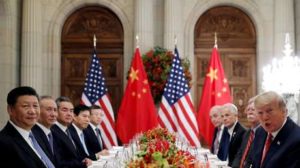
The deal presented to the US president by trade advisers incorporated a promise from China to buy more US farm products.
Those statements made the world stocks rise and achieve a record for the first time since early 2018, bond yields also rose on optimism about trade.
That day, Trump tweeted that the US and China are "VERY close" to signing a "BIG" trade deal.
He too yuan it rose the most in a year, rising above 7 to the dollar.
Then the US president posted on his Twitter account, “Getting VERY close to a BIG DEAL with China. They want it, and so do we!"
Getting VERY close to a BIG DEAL with China. They want it, and so do we!
- Donald J. Trump (@ realDonaldTrump) December 12, 2019
That tweet got the stock markets open in New York, sending stocks to new records.
Then he December 25, after more than a year of tensions in the relaciones between United States y China, Ministry of Finance of the Asian giant announced that they will tariff cuts for more than 850 products, among other medicines for asthma and diabetes, pork, integrated circuit boards, other high-tech components, among others, he indicated
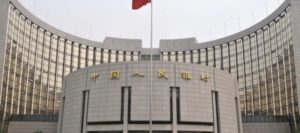
The Ministry of Finance of China reported that the reduction of tariffs will be from Monday January 1, asserted that the objective of this measure is to stimulate economic development and competition, highlighted thenewherald.com.
This measure complies with some of the resolutions that the United States and China agreed to as part of; business agreement that they signed after having a tariff war that has impacted the financial markets of the world. It only remains to wait for the culmination of this conflict in the first months of 2020.




